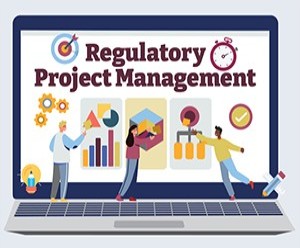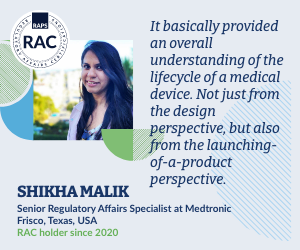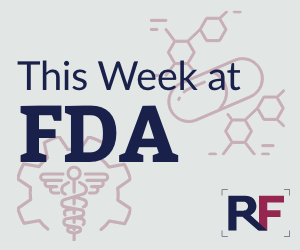FDA issues long-awaited LDT final rule
![]() Regulatory News | 29 April 2024 |
Regulatory News | 29 April 2024 |
Robert Califf and Jeff Shuren at the 2022 MedTech Conference in Boston. (Credit: Ferdous al-Faruque)
After years of jostling with industry, failed legislative efforts, and some false starts, the US Food and Drug Administration (FDA) has unveiled its plan to bring laboratory developed tests (LDTs) into its regulatory fold over the next four years.
The much-anticipated final rule amends the agency’s regulations to explicitly treat in vitro diagnostics (IVDs), including tests made by laboratories, as medical devices and offers a phased approach to regulating such tests.
“Today, we’re taking an important step forward in assuring patients, providers, and the public have access to safe, effective tests that they can trust,” FDA Commissioner Robert Califf said during a press briefing on Monday. “LDTs are being used more widely than ever before – from newborn screening, to predicting a person’s risk of cancer, or aiding and diagnosing heart disease and Alzheimer’s disease… However, the risks associated with most modern LDTs are much greater than the LDTs used when FDA’s enforcement discretion approach was adopted many years ago.”
“There’s a growing body of evidence that demonstrates that some IVDs offered as LDTs raise public health concerns because, for example, they don’t provide accurate test results, or they don’t perform as well as FDA-authorized tests. This evidence comes from public studies in the scientific literature, the FDA’s own experience in reviewing IVDs offered as LDTs, news articles and class-action lawsuits, as well as information we received in comments on our proposed rule,” said Jeff Shuren, director of the Center for Devices and Radiological Health, adding that the agency is “aware of numerous examples of potentially inaccurate, unsafe, ineffective, or poor quality IVDs offered as LDTs that caused or may have caused patient harm.”
Shuren also said the rulemaking will increase transparency across the market for tests. “For the first time, patients and providers will have a more comprehensive database of available IVDs, including LDTs, and important information about those tests to better inform their decision making,” he said.
Phaseout period
Under the final rule, FDA will provide a four-year phaseout period, during which it will gradually step up its requirements for LDTs, until four years from the date of publication of the final rule, when it expects most LDTs to be subject to the same regulatory approach as other IVDs.
The phaseout period is broken up into five stages:
Not all tests will be treated the same under the policy. The final rule contains carve outs for specific LDTs for which FDA will continue some level of enforcement discretion, which FDA said were made in response to comments it received during the public consultation. These include so-called “1976-type LDTs,” human leukocyte antigen (HLA) tests, forensic law enforcement tests, tests made by and performed within the Veterans Health Administration (VHA) or Department of Defense (DoD), tests manufactured and performed by integrated healthcare system laboratories to meet the unmet needs of patients receiving care within the same healthcare system, currently marketed IVDs that are offered as LDTs and marketed prior to the issuance of the final rule, and non-molecular antisera LDTs for rare red blood cell (RBC) antigens made by and performed in blood establishments where no suitable alternative tests are available.
Shuren noted that the enforcement discretion policy for tests healthcare system labs was included “to address the risk that the perceived cost of compliance with such requirements could lead to the widespread loss of access to beneficial IVDs on which patients currently rely.”
Shuren also said that FDA will be issuing additional guidance to expand upon the final rule but did not offer a timeline for when such guidance would be made available.
What about VALID?
When asked about the potential for legislative action on diagnostics, such as the Verifying Accurate, Leading-edge IVCT Development (VALID) Act, Shuren pointed out that the act would be distinct from the agency’s rulemaking and would alter the statutory environment for all clinical tests, not just LDTs, whereas the agency’s rulemaking only clarifies the agency’s interpretation of the current medical device statues to apply to IVDs, including LDTs.
“We also continue to be open to working with Congress on a modern legislative framework for all tests, and should that come to pass, that would supersede the rulemaking … depending upon what the legislation in fact does,” Shuren said.
In issuing the final rule, FDA has largely rebuffed concerns from laboratory and hospital groups, who have argued that FDA regulation of LDTs would be unduly burdensome and instead sought action on diagnostics. (RELATED: FDA proposes long-awaited LDT enforcement rule, Regulatory Focus 29 September 2023; Stakeholders respond to Senate LDT reform inquiry, Regulatory Focus 8 April 2024)
The American Clinical Laboratory Association (ACLA) said it is “disappointed” that FDA has moved forward with the final rule. “Clinical laboratories are already subject to robust regulation and oversight, and ACLA maintains that new legislation would be required for the FDA to regulate laboratory developed testing services,” the group said.
Medical device industry group AdvaMed instead praised the rule as representing “significant progress,” though it called on Congress to pass the VALID Act to further reform the regulation of diagnostic tests.
Public health emergencies
Alongside the final rule, FDA announced two draft guidances detailing its planned enforcement policies for tests in response to public health emergencies.
The first policy lays out FDA’s enforcement discretion policy for laboratory manufacturers in the immediate response to a chemical, biological, radiological, or nuclear (CBRN) threat, before a public health emergency declaration is made under Section 564 of the Federal Food, Drug, and Cosmetic Act.
The second policy sets out the agency’s thought process on how it will consider enforcement discretion policies for tests during a declared public health emergency.
Federal Register notice, FDA
The much-anticipated final rule amends the agency’s regulations to explicitly treat in vitro diagnostics (IVDs), including tests made by laboratories, as medical devices and offers a phased approach to regulating such tests.
“Today, we’re taking an important step forward in assuring patients, providers, and the public have access to safe, effective tests that they can trust,” FDA Commissioner Robert Califf said during a press briefing on Monday. “LDTs are being used more widely than ever before – from newborn screening, to predicting a person’s risk of cancer, or aiding and diagnosing heart disease and Alzheimer’s disease… However, the risks associated with most modern LDTs are much greater than the LDTs used when FDA’s enforcement discretion approach was adopted many years ago.”
“There’s a growing body of evidence that demonstrates that some IVDs offered as LDTs raise public health concerns because, for example, they don’t provide accurate test results, or they don’t perform as well as FDA-authorized tests. This evidence comes from public studies in the scientific literature, the FDA’s own experience in reviewing IVDs offered as LDTs, news articles and class-action lawsuits, as well as information we received in comments on our proposed rule,” said Jeff Shuren, director of the Center for Devices and Radiological Health, adding that the agency is “aware of numerous examples of potentially inaccurate, unsafe, ineffective, or poor quality IVDs offered as LDTs that caused or may have caused patient harm.”
Shuren also said the rulemaking will increase transparency across the market for tests. “For the first time, patients and providers will have a more comprehensive database of available IVDs, including LDTs, and important information about those tests to better inform their decision making,” he said.
Phaseout period
Under the final rule, FDA will provide a four-year phaseout period, during which it will gradually step up its requirements for LDTs, until four years from the date of publication of the final rule, when it expects most LDTs to be subject to the same regulatory approach as other IVDs.
The phaseout period is broken up into five stages:
- Stage 1 begins one year from the date of publication of the final rule. Test makers will be subject to medical device reporting (MDR) requirements, correction and removal reporting requirements, and quality system requirements for maintaining complaint files.
- Stage 2 begins two years from the final rule’s publication. The list of requirements for test makers to follow will expand to include registration and listing requirements, labeling requirements, and investigational use requirements.
- Stage 3 begins three years from the final rule’s publication. Test makers will need to comply with the remaining quality system requirements under 21 CFR part 820.
- Stage 4 begins three and a half years from the final rule’s publication. Test makes are expected to comply with premarket review requirements for high-risk IVDs offered as LDTs. FDA said it intends to exercise enforcement discretion for test makers who have sent in a premarket submission by the beginning of this stage for the duration of the submission review.
- Stage 5 begins four years from the final rule’s publication. Test makers will be expected to comply with premarket review requirements for low- and moderate-risk IVDs offered as LDTs for tests that would require premarket submissions. As with Stage 4, FDA said it will exercise enforcement discretion for test with premarket submissions received by the beginning of this stage for the duration of their review.
Not all tests will be treated the same under the policy. The final rule contains carve outs for specific LDTs for which FDA will continue some level of enforcement discretion, which FDA said were made in response to comments it received during the public consultation. These include so-called “1976-type LDTs,” human leukocyte antigen (HLA) tests, forensic law enforcement tests, tests made by and performed within the Veterans Health Administration (VHA) or Department of Defense (DoD), tests manufactured and performed by integrated healthcare system laboratories to meet the unmet needs of patients receiving care within the same healthcare system, currently marketed IVDs that are offered as LDTs and marketed prior to the issuance of the final rule, and non-molecular antisera LDTs for rare red blood cell (RBC) antigens made by and performed in blood establishments where no suitable alternative tests are available.
Shuren noted that the enforcement discretion policy for tests healthcare system labs was included “to address the risk that the perceived cost of compliance with such requirements could lead to the widespread loss of access to beneficial IVDs on which patients currently rely.”
Shuren also said that FDA will be issuing additional guidance to expand upon the final rule but did not offer a timeline for when such guidance would be made available.
What about VALID?
When asked about the potential for legislative action on diagnostics, such as the Verifying Accurate, Leading-edge IVCT Development (VALID) Act, Shuren pointed out that the act would be distinct from the agency’s rulemaking and would alter the statutory environment for all clinical tests, not just LDTs, whereas the agency’s rulemaking only clarifies the agency’s interpretation of the current medical device statues to apply to IVDs, including LDTs.
“We also continue to be open to working with Congress on a modern legislative framework for all tests, and should that come to pass, that would supersede the rulemaking … depending upon what the legislation in fact does,” Shuren said.
In issuing the final rule, FDA has largely rebuffed concerns from laboratory and hospital groups, who have argued that FDA regulation of LDTs would be unduly burdensome and instead sought action on diagnostics. (RELATED: FDA proposes long-awaited LDT enforcement rule, Regulatory Focus 29 September 2023; Stakeholders respond to Senate LDT reform inquiry, Regulatory Focus 8 April 2024)
The American Clinical Laboratory Association (ACLA) said it is “disappointed” that FDA has moved forward with the final rule. “Clinical laboratories are already subject to robust regulation and oversight, and ACLA maintains that new legislation would be required for the FDA to regulate laboratory developed testing services,” the group said.
Medical device industry group AdvaMed instead praised the rule as representing “significant progress,” though it called on Congress to pass the VALID Act to further reform the regulation of diagnostic tests.
Public health emergencies
Alongside the final rule, FDA announced two draft guidances detailing its planned enforcement policies for tests in response to public health emergencies.
The first policy lays out FDA’s enforcement discretion policy for laboratory manufacturers in the immediate response to a chemical, biological, radiological, or nuclear (CBRN) threat, before a public health emergency declaration is made under Section 564 of the Federal Food, Drug, and Cosmetic Act.
The second policy sets out the agency’s thought process on how it will consider enforcement discretion policies for tests during a declared public health emergency.
Federal Register notice, FDA
© 2025 Regulatory Affairs Professionals Society.










![Regulatory Due Diligence for Product Development [3.0 RAC]](https://my.raps.org:443/images/84b26380-02b5-4ce9-8329-bae179661126.img?resize=yes)



